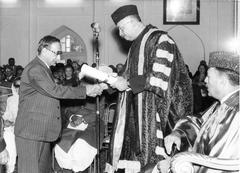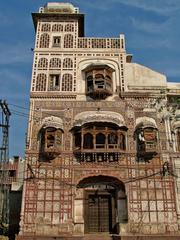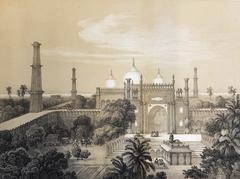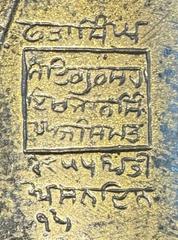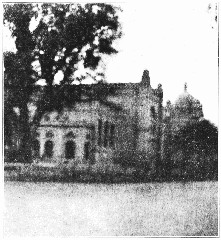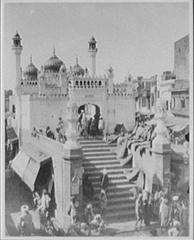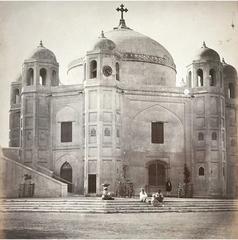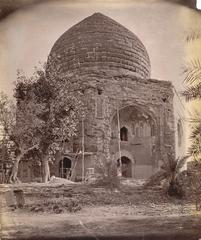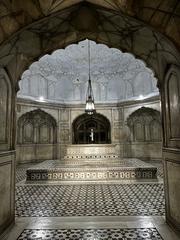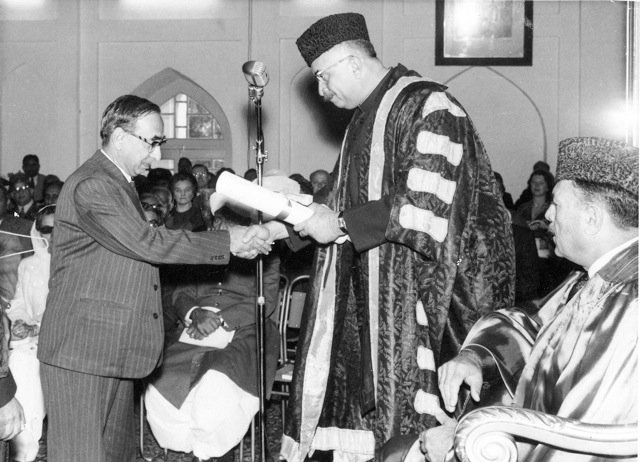
University of the Punjab Lahore: Visiting Hours, Tickets, and Historical Sites Guide
Date: 14/06/2025
Introduction
The University of the Punjab, Lahore, founded in 1882, stands as Pakistan’s oldest and largest public university. Nestled in the cultural and historical heart of Lahore, the university is renowned for its academic excellence, unique architectural blend, and pivotal role in the nation’s intellectual and social landscape. Beyond its educational prominence, the university is a living testament to the region’s colonial, Mughal, and Islamic architectural heritage, making it a must-visit destination for history enthusiasts, architecture admirers, and cultural travelers.
This comprehensive guide presents essential information for visitors—covering the university’s historical evolution, visiting hours, ticketing details, accessibility, campus highlights, nearby attractions, and practical travel tips—so you can make the most of your visit to this iconic institution (Britannica, Campus.pk, Jaamiah).
Table of Contents
- Introduction
- Historical Overview
- Architectural and Cultural Heritage
- Visiting Hours and Ticket Information
- Accessibility and Travel Tips
- Campus Highlights and Photographic Spots
- Nearby Attractions
- Academic and Social Influence
- Visitor Amenities and Practical Guidance
- Frequently Asked Questions (FAQ)
- Further Resources
- Conclusion
Historical Overview
Founding and Early Development (1882–1947)
Established by the British colonial administration in 1882, the University of the Punjab addressed the region’s growing need for higher education. It succeeded colleges previously affiliated with the University of Calcutta, adopting British academic standards and English as the medium of instruction. Early faculties included arts, sciences, law, medicine, and engineering, shaping generations of leaders and scholars (Britannica).
Post-Partition Evolution
Following the 1947 partition, the university underwent major transformation. While its Indian-affiliated colleges became part of Punjab University, Chandigarh, the Lahore institution expanded its focus—especially in Islamic and Oriental studies—emphasizing inclusivity and fostering intellectual growth in the newly formed Pakistan (Jaamiah, Campus.pk).
Architectural and Cultural Heritage
The University of the Punjab is celebrated for its remarkable architecture:
- Allama Iqbal Campus (Old Campus): Located on Mall Road, this campus reflects a harmonious blend of Indo-Islamic and British colonial styles, with domes, arches, intricate tile work, and lush courtyards. Named after the poet-philosopher Allama Muhammad Iqbal, it is an architectural highlight of Lahore.
- Quaid-i-Azam Campus (New Campus): Spanning over 1,800 acres along Canal Road, this campus features modernist design principles interwoven with traditional elements, scenic lakes, and green spaces.
- Other Campuses: Sub-campuses in Gujranwala, Jhelum, and Khanaspur offer practical learning environments while maintaining regional architectural motifs.
Heritage buildings like Senate Hall, the Main Library, and the Institute of Education and Research provide rich photographic opportunities and a glimpse into the university’s evolving architectural narrative (Jaamiah).
Visiting Hours and Ticket Information
General Visiting Hours:
- Monday to Saturday: 8:00 AM – 6:00 PM (Quaid-i-Azam and Allama Iqbal Campuses)
- Sunday and Public Holidays: Closed
Entry and Ticketing:
- General Entry: Free for campus sightseeing and public academic or cultural events.
- Special Exhibitions or Guided Tours: May require prior registration or a nominal ticket fee.
- Visitor Registration: All visitors must check in at the main gate with valid government-issued ID for security.
For the latest updates on events, ticketed exhibitions, or COVID-19 restrictions, consult the official university website.
Accessibility and Travel Tips
- Location:
- Allama Iqbal Campus is centrally located on Mall Road, close to Lahore Museum and Anarkali Bazaar.
- Quaid-i-Azam Campus is along Canal Road, easily accessible by car, taxi, ride-hailing apps, and public transport.
- Mobility: Most major buildings have wheelchair access, ramps, and accessible restrooms. Some heritage buildings might have limited accessibility—contact the administration in advance if needed.
- Best Time to Visit: October to March for pleasant weather and optimal photography conditions.
- Security: Strict gate protocols and campus patrols ensure visitor safety. Avoid visiting after dark.
Campus Highlights and Photographic Spots
- Allama Iqbal Campus: Marvel at red-brick facades, domed roofs, and lush courtyards.
- Senate Hall & Main Library: Historic interiors with colonial and Mughal influences.
- Quaid-i-Azam Campus: Scenic lakes, tree-lined avenues, and modern academic facilities.
- Botanical Gardens: Ideal for photography and leisurely walks.
- Art Galleries and Museums: Explore rare manuscripts, local art, and rotating exhibitions.
Nearby Attractions
Combine your campus tour with these Lahore landmarks (The Diary of a Nomad):
- Lahore Museum: Regional art and historical artifacts.
- Badshahi Mosque: Iconic Mughal mosque.
- Lahore Fort: UNESCO World Heritage Site.
- Anarkali Bazaar: Traditional shopping and local cuisine.
- Shalimar Gardens: Mughal landscaping.
Academic and Social Influence
- Academic Leadership: The university comprises 13 faculties, 83 departments, and over 634 affiliated colleges nationwide (Campus.pk).
- Research and Innovation: Emphasis on international standards, morning/evening shifts, and a dynamic research culture.
- Role in Social Movements: A historic center for independence, democracy, and human rights activism (Campus.pk).
Visitor Amenities and Practical Guidance
- Accommodation: University guesthouses for academic visitors; bookings require advance notice.
- Dining: Cafeterias serve Pakistani cuisine at affordable rates.
- Facilities: Wi-Fi, prayer rooms, clean restrooms, and campus bookstores for souvenirs.
- Events: Annual book fair, art exhibitions, public lectures, and cultural festivals—many open to the public.
Frequently Asked Questions (FAQ)
Q: What are the visiting hours?
A: Monday to Saturday, 8:00 AM to 6:00 PM. Closed Sundays and public holidays.
Q: Is there an entry fee?
A: General entry is free; some special events or exhibitions may require tickets.
Q: Are guided tours available?
A: Guided tours can be arranged for academic visitors and prospective students. General tourists can self-explore.
Q: Is the campus accessible for disabled visitors?
A: Yes, most major buildings have ramps and accessible restrooms.
Q: What are the main attractions to visit on campus?
A: Allama Iqbal Campus, Senate Hall, Main Library, Quaid-i-Azam Campus, botanical gardens, and art galleries.
Q: What should visitors bring?
A: A valid ID for entry, camera for photography, and modest clothing in line with local customs.
Q: What are nearby attractions?
A: Lahore Museum, Badshahi Mosque, Lahore Fort, and Anarkali Bazaar.
Further Resources
- University of the Punjab Official Website
- Britannica – University of the Punjab
- Campus.pk – Punjab University Lahore
- Jaamiah – Allama Iqbal Campus
- The Diary of a Nomad – Best Places to Visit in Lahore
Conclusion
A visit to the University of the Punjab offers a unique convergence of academic excellence, architectural splendor, and cultural heritage. As a cornerstone of Lahore’s intellectual and historical identity, the university welcomes tourists, prospective students, and scholars to experience its vibrant campuses and rich legacy.
To enhance your visit, consult the official website for up-to-date information on hours, events, and accessibility. Combine your campus exploration with nearby historical landmarks for a comprehensive cultural experience. For tailored travel tips, download the Audiala app and follow the university’s social media channels.
Explore the University of the Punjab—a gateway to Pakistan’s educational and cultural heritage.
Alt text: Entrance gate of University of the Punjab Allama Iqbal Campus with Islamic architectural design.
Alt text: View of Badshahi Mosque, a nearby historical site to University of the Punjab in Lahore.
